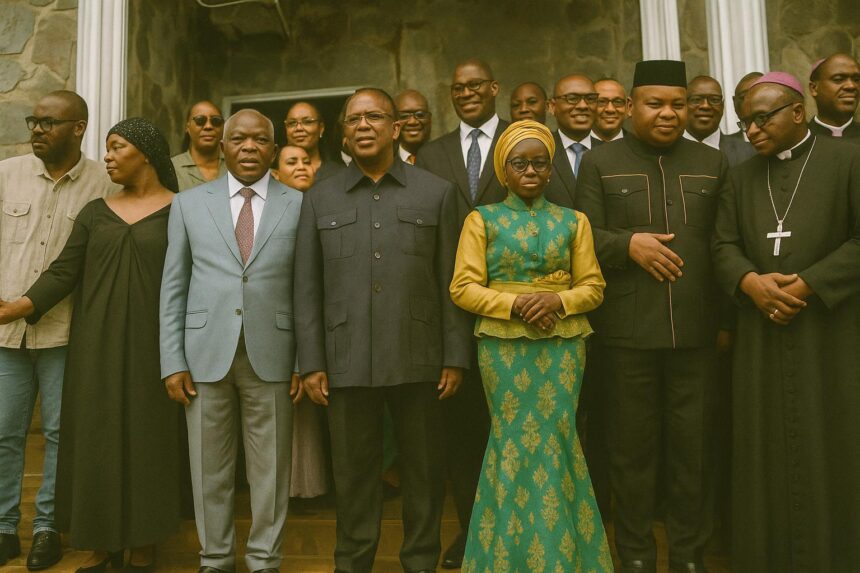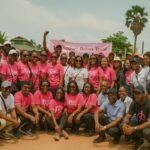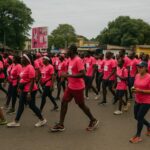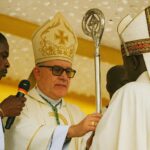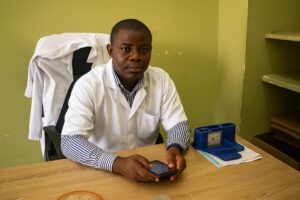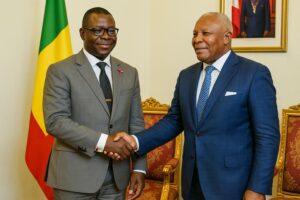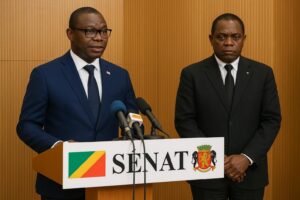A Landmark Facility Arrives in Congo’s Green Triangle
The ceremonial ribbon fluttered beneath the Niari’s humid skies as the Or Vert Medical-Social Center officially opened its doors in Dolisie, Congo-Brazzaville’s vital rail junction and third-largest city. Presided over by Minister of Health and Population Jean-Rosaire Ibara and flanked by Minister of River Economy and Waterways Honoré Sayi, the event unfolded before prefects, parliamentarians, and an enthusiastic crowd that appeared eager to witness a tangible expansion of the nation’s health architecture. For observers of Central African public policy, the optic was unmistakable: the Republic’s development narrative increasingly pivots around calibrated deployments of social infrastructure outside the capital.
- A Landmark Facility Arrives in Congo’s Green Triangle
- Strategic Geography and the Pursuit of Balanced Development
- Public-Private Synergy under Brazzaville’s Stewardship
- Technical Specifications Meet Community Expectations
- Projected Add-Ons: Ophthalmology and Dialysis Horizons
- Measuring Impact against National Coverage Ambitions
- Soft Power, Cultural Pageantry, and the Politics of Care
- From Ribbon to Roadmap: A Preview of Dolisie’s Health Future
Strategic Geography and the Pursuit of Balanced Development
Dolisie’s selection is neither accidental nor merely symbolic. Nestled at the intersection of the Congo-Ocean railway and regional trade corridors, the city channels agricultural produce from the Niari and forest resources from the Lékoumou. By anchoring a state-supported but privately operated health hub here, Brazzaville signals its determination to dilute the longstanding north–south care disparity documented by the World Health Organization’s 2023 country profile. Local mayor Dieudonné Tchicaya encapsulated this logic by proclaiming that health, as the linchpin of productivity, extends the president’s vision of ‘development in concentric circles’ starting from provincial heartlands.
Public-Private Synergy under Brazzaville’s Stewardship
Operated by the Congolese group Sécurex, the center demonstrates how private capital can be woven into national objectives without surrendering regulatory oversight. Conformity certificates were delivered on the spot by health inspectors, underscoring a policy environment that encourages entrepreneurial engagement while retaining ministerial gatekeeping. Regional analysts at the African Development Bank have pointed to such models as catalysts for efficiency, provided they remain nested within coherent public frameworks. In that sense, the Or Vert network, already active in Brazzaville, Ouesso, and Casablanca, offers proof of concept for scalable synergy.
Technical Specifications Meet Community Expectations
The facility houses twenty-plus inpatient beds, a fully equipped operating theatre, an intensive care unit, a diagnostics laboratory, and an on-site pharmacy. While modest by metropolitan benchmarks, these assets represent a qualitative leap for Niari Province, where the 2022 national health survey recorded an average of 0.4 surgical beds per 10,000 inhabitants. Founder-CEO Ange Frédéric Ovaga stressed that the design responds to epidemiological realities such as obstetric complications, trauma from logging activity, and emerging non-communicable diseases. Early patient throughput projections hover around 8,000 consultations annually, a figure local medical associations deem realistic given the city’s catchment of nearly 300,000 residents.
Projected Add-Ons: Ophthalmology and Dialysis Horizons
Looking beyond the inaugural push, Sécurex plans to commission an ophthalmology suite and a dialysis wing by late 2025, two services that remain concentrated in Brazzaville and Pointe-Noire. The Ministry of Health’s 2021–2027 strategic plan highlights chronic kidney disease and preventable blindness as rising public-health burdens, making Dolisie’s forthcoming units a timely alignment with national priorities. Financial structuring for these add-ons reportedly blends corporate revenue, concessional credit, and targeted tax incentives, a formula authorities describe as ‘shared risk for shared return’.
Measuring Impact against National Coverage Ambitions
Congo-Brazzaville aspires to lift its Universal Health Coverage index from 46 to 60 by 2030, according to commitments filed with the African Union’s Agenda 2063 secretariat. Analysts argue that incremental but regionally dispersed nodes such as Or Vert can accelerate that trajectory by decompressing urban referral hospitals and offering earlier intervention points in provincial zones. Yet sustainability will hinge on stable power supply, competitive procurement of pharmaceuticals, and continuous professional training—variables that policymakers are addressing through energy-grid upgrades and scholarship schemes supported by multilateral partners.
Soft Power, Cultural Pageantry, and the Politics of Care
The launch culminated with dancers on towering ‘Mukudji’ stilts and polyphonic rhythms from the Navane troupe, an aesthetic choice that folded cultural diplomacy into health diplomacy. Such choreography projected an image of state cohesion, echoing a broader trend wherein African governments integrate heritage performances into policy rollouts to deepen popular resonance. For visiting diplomats, the spectacle provided an anthropological window into how Congo intertwines nation-building, soft power, and service delivery in one seamless tableau.
From Ribbon to Roadmap: A Preview of Dolisie’s Health Future
As the last echoes of drums faded, the center’s corridors filled with the subdued bustle of clinicians ready to translate bricks and mortar into tangible outcomes. Their success will be monitored closely by regional observers who regard Dolisie as a bellwether for replicable public-private healthcare models. Should the facility achieve its patient-care benchmarks and complete its planned expansions, it may well serve as the prototype for a nationwide lattice of mid-sized, multifunctional health hubs. In doing so, it would move the Republic one step closer to the universal, equitable care paradigm articulated by President Denis Sassou-Nguesso on the floor of the United Nations General Assembly last September.

